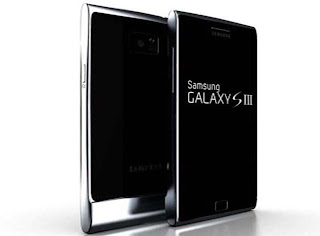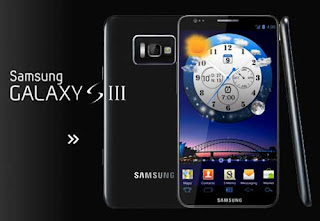HTC One X vs iPhone 4S Vr Samsung Galaxy S3
Form - http://www.trustedreviews.com/opinions/samsung-galaxy-s3-vs-htc-one-x-vs-iphone-4s
The Samsung Galaxy S3 is here. It's big, it's bold and it's probably
going to be one of the best-selling phones of the year. But how does it
compare with the HTC One X and the iPhone 4S?
We've dug into the
spec sheet, fondled the phone itself and mused deeply on what a
smartphone is to find out. Here's what we found…
More on the the "Next Galaxy" -
Hands-on preview with videoSamsung Galaxy S3 - have android smartphones become boring?Samsung Galaxy S3 release date set for MayBody and buildSamsung Galaxy S3 - Plastic, Gorilla Glass II
HTC One X - Plastic, Gorilla Glass
iPhone 4S - Metal, toughened glass, oleophobic surface
If
you want a giant-screened phone, you'll have to accept that your mobile
will have a plasticky finish that probably won't feel quite as good as
the hard and dense vibe of smaller metal phones. It's not a hard and
fast rule that big phones can't use a metal like aluminium, but most
manufacturers stick with plastic to keep weight down.

The
HTC One X has taken a leaf out of Nokia's book, with a Lumia 800-like
plastic finish. Samsung's Galaxy S3 comes in two shiny plastic finishes -
white and a dark blue brushed metal-effect, but it's still definitely
plastic. LIke the Samsung Galaxy S2 before it, the battery cover is a
very thin piece of plastic. It looks nice, but doesn't feel a million
dollars converted into phone form.
On the other side of the
fence, the iPhone 4S is covered on each side by layers of toughened
glass. It helps to keep the phone feeling ultra-premium, but doesn't
half make you worried about dropping the thing.
Dimensions and weightSamsung Galaxy S3 - 131 x 63.7 x 8.9mm, 133g
HTC One X - 134 x 70 x 8.9mm, 130g
iPhone 4S - 115.2 x 58.6 x 9.3 mm, 140g
Using
plastic as the main body material pays off in weight. Both the Samsung
Galaxy S3 and HTC One X are significantly lighter than the iPhone. We
say significantly, but its only so in phone design terms. The sub-20g
difference is only worth worrying about if your arms are weaker than our
puns.

What's
less easy to forget is that the Samsung and HTC are both very large, on
account of their oversized screens. Two centimetres in length and one
in width makes the larger phones completely different to hold. In our
experience, though, larger phones slip into most pockets fairly easily
because they're so thin. The iPhone 4S is the thickest device of the
three and - let's face it - it's hardly a porker.
ScreenSamsung Galaxy S3 - 4.8in Super AMOLED, 720 x 1,280 pixels
HTC One X - 4.7in Super IPS, 720 x 1,280 pixels
iPhone 4S - 3.5in IPS, 640 x 960 pixels
An
important question for phone buyers in 2012 is - IPS or Super AMOLED?
As more manufacturers start to move on from the so-so S-LCD screens of
2011, these higher-performing screen types are becoming the standard at
the top-end in 2012.
The HTC One X and iPhone 4S use a variation
on the IPS type - which stands for in-plane switching. These screens are
also used in iPads, and most top-end tablets. Benefits include
excellent viewing angles and great overall picture quality. The one
chink in the IPS armour is the use of a universal backlight. In a dark
environment, the luminescence of the backlight is visible - appearing
greyish or blueish.

The
Samsung Galaxy S3's Super AMOLED screen avoids this effect. It uses
light-emitting pixels rather than a standard backlight, letting pixels
displaying black stay perfectly dark.
Another big consideration
in screens here is, of course, size. To watch movies or play games on,
the extra screen inch of the HTC and Samsung Android phones comes in
seriously handy. In the iPhone 4S's defence, the ultra-high 326 dpi
pixel density lets you get your face pretty close to the screen without
any eyestrain. While the HTC and Samsung feature many more pixels than
the Apple device, their pixel pack-ness it actually a smidge lower - per
inch - at around 319dpi.
PowerSamsung Galaxy S3 - Quad-core 1.4GHz Exynos 4212, Mali-400 GPU
HTC One X - Quad-core 1.5GHz Tegra 3, GeForce GPU
iPhone 4S - Dual-core 1GHz Apple A5, PowerVR SGX543MP2
Cores
are the new megapixels in the phone world. If you don't have four cores
at the very least, you're not going to be able to hang with the cool
kids. Of course, this theoretical power doesn't amount to much if it
doesn't translate to real-world performance.
Of the three
processors, the Tegra 3 is generally thought of as the weakest for
graphics. It's routinely outperformed in benchmarks by Apple's current
devices. Early benchmarks show that the Exynos 4212 is also
significantly faster than the Tegra 3 - this time across the board
rather than just in graphical performance.

However,
in terms of getting apps and games that'll actually make full use of
the power, you’re much better off with an iPhone. Android developers
have to consider the masses of different chipsets Android phone and
tablet owners might use, where iOS devs only have to consider the last
few generations of A-series chips.
Devs don't just think about
the lowest comon denominator, but they can't always max everything out
for the luckiest phones owners out there.
StorageSamsung Galaxy S3 - 16/32/64GB, microSD
HTC One X - 32GB, non-expandable
iPhone 4S - 16/32/64GB, non-expandable
A
disturbing trend has begun in top-end Android smartphones. They've
started leaving out the memory card slot that was once the staple of
every Android phone. They have fallen to the
way of the iPhone.
Apple's
iPhone has never had expandable memory, and it's not something that's
likely to change with this year's iPhone 5, either. However, leaving out
the microSD card slot in the HTC One X is arguably even more annoying
than it is in iDevices. You can buy a 64GB iPhone, but the HTC One X
maxes-out at 32GB. That's not really enough to house a large music
collection, plus apps and games.
The Samsung Galaxy S3 continues
the trend of its predecessor the Galaxy S2, with at least 16GB of
internal memory and a microSD card slot. Best of both worlds? Yes,
although the 64GB does not come cheap.















